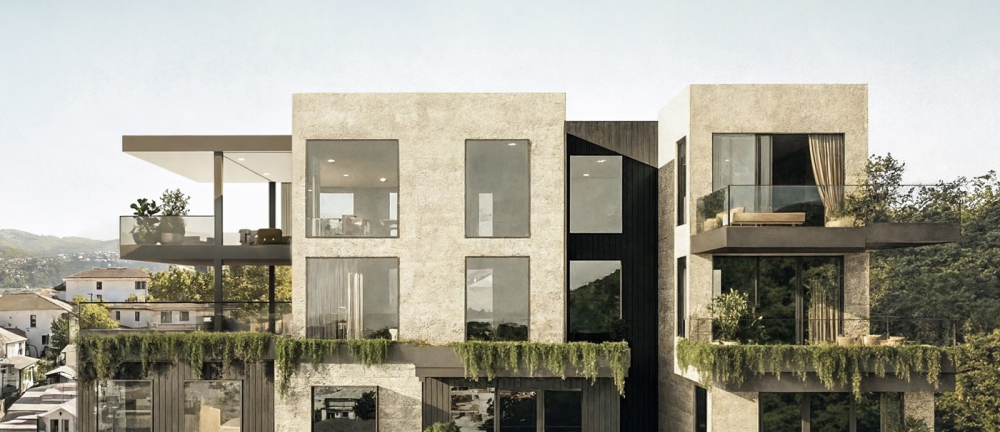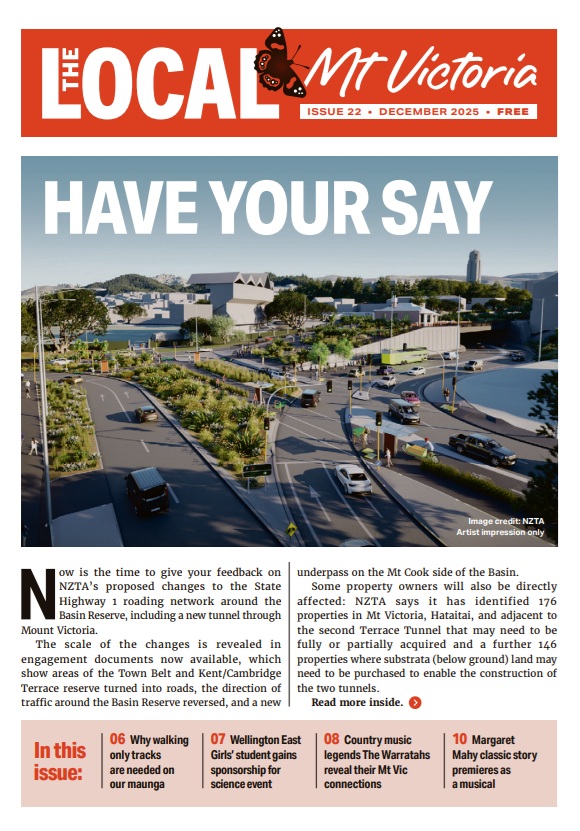Neighbours opposed to the Mayfair development going ahead on Austin Street canvassed the Lambton/Pukehīnau council candidates for their opinions on the controversial apartment block. This is what they received (in order of response):
David Lee:
The proposed Mayfair apartment development is a clear example of Council using its powers to push for intensive housing while dismissing community interests. Despite the Independent Hearings Panel recommending stronger protections for character areas, Council chose to overrule the experts and rezone for high-density development. This “we know best” approach strips neighbours of their ability to have a say and prioritises growth at any cost, undermining trust and eroding the balance between housing supply, heritage, and community wellbeing.
Dan Milward:
I share the community’s concern about the scale and impacts of the proposed development at 43 Austin Street.
Removing thousands of cubic metres of Mt Vic, 27,000 truck movements, and a safe footpath for kids to get to school is too high a price for a handful of un-affordable apartments.
What’s missing in Wellington is genuine public consultation. I will be standing for a deliberative democracy policy to replace the current process, empowering residents to work directly with city officers and shape major development decisions in their communities.
Afnan AL-Rubayee:
The Labour team and I are generally always supportive of new housing, which we need to make our city more affordable and make sure everyone can have a warm, dry home.
However, there are some very understandable concerns raised about this particular project, including around the shared access-way and disruption that could be caused by construction. These are important issues for the community to be considered through the resource consent process. I’m always keen to listen and discuss the best way to get these things right on a case-by-case basis.
Tony De Lorenzo:
Thank you for raising these important questions about the proposed development in Mt Victoria.
I understand your concerns about potential impacts on our community's character and infrastructure.
My position is that I support responsible development that helps build a better Wellington for everyone.
This project, while large, provides significant benefits that align with our city's long-term needs.
For one, it directly addresses our city's housing shortage, with an ability to create homes for disabled or aged persons who need on-site facilities and independent transport. This is a critical need in our city.
Furthermore, this development will create dozens of jobs for local tradespeople, injecting millions of dollars into our economy at a time when we need it most.
The increase in the rates base will help fund essential city services and put downward pressure on future rate increases for all Wellingtonians.
I also want to assure you that my support is contingent on a commitment to due process and community engagement. I will work with council and the community to ensure the developer fully complies with all legal requirements and consent conditions. As your city councillor, I will advocate for a community liaison group to ensure your voices are heard throughout the construction process.
I believe we can have a vibrant, growing city without sacrificing the things that make our neighbourhoods special. This development, if managed responsibly, is a step towards that future. I cannot, in good conscience, oppose a project that provides so much for our city.
Nicola Young:
I’m opposed to Mayfair, the proposed luxury apartment development so unsuited for Mount Victoria. The seven-storey building is completely out of scale with the area’s character and will block sunlight from Rixon Grove and upper Pirie Street during winter. The 27,000 construction vehicle movements over two years will blight the suburb and - in particular - Westbourne Grove (the private driveway shared with five other properties) will become dangerous, especially for children, because of the proposed removal of the footpath. The development intentionally has fewer carparks than apartments (high-end apartments typically cater for more parking), so cars will spill into neighbouring streets.
Wellington needs more affordable housing, not luxury apartments that will blight Mt Victoria for generations. In this depressed housing market, however, I believe it is unlikely the development will proceed. It’s the first sign of how ill-conceived the new District Plan (that I opposed) is – allowing a scattergun approach to large residential developments, rather than focusing on Kent and Cambridge terraces which still have car yards dotted along them.
Rodney Barber:
The development raises real concerns for Mt Vic including safety and traffic impacts, scale, and the lack of community input. I believe residents should be involved early in shaping developments that affect their neighbourhood, not brought in once decisions are made. On this basis, I do not support the proposal as it stands.
Wellington urgently needs more housing. That said, new developments must deliver real value which in my view is homes that are affordable, sustainable, and designed with the community, not imposed on it.
Zan Rai Gyaw:
This is a sharp end when the council is not doing its job of listening to the residents, a sharp end, nevertheless. In short, I will look to overturn the current high-density designation and try to prevent out of place developments going ahead.
District Planning is an extensive task and a top-down approach would never work. Even though the current District Plan has been in place, I will see what we can do to overturn the density designation of the city. Mt. Vic suburb is at about 1.5km× 0.5km, it is not
going to solve any housing initiatives.
Organising the current and future housing stocks is always going to be a demanding task of any city council. Wellington being small and hilly should pursue a flexible suburb by suburb, section by section approach. For example, there are a few modern and town houses sitting perfectly fine next to Victorian Villas in Kelburn, Thorndon and elsewhere. Home-owing citizenry is a key to a functioning democracy but there is a big difference between one household in a 3-storey building and that of a set of three households 1-storey each. Neighbour/social issues are going to be aboundHousing advocates have missed the boat when for the last 10-15 years, in regions, they have been converting productive farm lands into subdivisions. We don’t have to look far to Kapiti Coast and Upper Hutt to see this. If we were to convert as so, they should have been functioning and spacious medium/high density condominiums with public spaces dotted around.
Geordie Rogers:
I was, and am, still supportive of the changes made to the District Plan that enable higher density living across the central city and the inner city suburbs. Developments enabled by the district plan changes include new townhouses right alongside public transport routes across the city providing warm and dry places for Wellingtonians. Councillors do not have decision making powers for individual resource consents including 43 Austin Street, instead we are able to more broadly shape our city and permit housing where it's most needed.
Tim Ward:
I believe the Mayfair development fails to deliver the intended outcomes of the District Plan. The plan change was meant to support well-designed intensification that improves supply and affordability, not developments like 43 Austin Street. What frustrates me most is that an Independent Panel was commissioned at ratepayer expense to provide expert advice, only for it to be ignored.
Teal Mau:
Wellington doesn’t need luxury towers—we need jobs, affordable rates, and developments that respect our communities.The District Plan was meant to deliver affordable housing and better transport through well-planned higher density. The proposal for 32 luxury apartments (and 29 carparks) at 43 Austin Street does the opposite: it blocks Town Belt views, overshadows heritage homes, removes neighbours’ sunlight, and creates safety risks on a narrow right-of-way.With thousands of vacant apartments, rents down 14%, and house prices down over 25%, it’s misleading to claim a housing crisis. Availability and affordability have improved.Wellington’s real challenges are unaffordable rates, ageing and unreliable infrastructure, and declining confidence in council. That is where council must focus—not rubber-stamp developments that ignore community concerns and erode the character that makes Wellington special.
Stuart Wong:
No Response.




